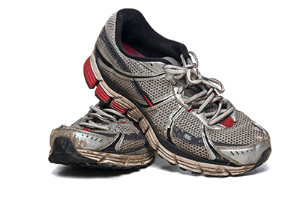
Differentiating between walking and running shoes is essential for optimizing comfort and performance during physical activity. While both types of shoes may appear similar, subtle design features cater to the distinct biomechanics and movement patterns associated with each activity. Running shoes typically feature more cushioning and support in the heel and forefoot to absorb impact and provide stability during high-impact movements. They also tend to have a more flexible sole to facilitate the rolling motion of the foot from heel to toe. In contrast, walking shoes prioritize flexibility in the forefoot and emphasize support and stability throughout the midsole to accommodate the heel-to-toe motion of walking. Additionally, walking shoes often have a lower profile and lighter weight compared to running shoes. Understanding these differences allows individuals to select the appropriate footwear for their preferred activity, ensuring optimal comfort, support, and injury prevention during walking or running endeavors. If you have more specific questions about what type of shoes to buy for your walking or running experiences, it is suggested that you consult a podiatrist.
For more information about walking shoes versus running shoes, consult with one of our podiatrists from Southwest Podiatry. Our doctors can measure your feet to determine what your needs are and help you find an appropriate pair of footwear.
Foot Health: The Differences between Walking & Running Shoes
There are great ways to stay in shape: running and walking are two great exercises to a healthy lifestyle. It is important to know that running shoes and walking shoes are not interchangeable. There is a key difference on how the feet hit the ground when someone is running or walking. This is why one should be aware that a shoe is designed differently for each activity.
You may be asking yourself what the real differences are between walking and running shoes and the answers may shock you.
Differences
Walking doesn’t involve as much stress or impact on the feet as running does. However, this doesn’t mean that you should be any less prepared. When you’re walking, you land on your heels and have your foot roll forward. This rolling motion requires additional support to the feet.
Flexibility – Walking shoes are designed to have soft, flexible soles. This allows the walker to push off easily with each step.
If you have any questions, please feel free to contact our offices located in Dallas, and Carrollton, TX . We offer the newest diagnostic and treatment technologies for all your foot care needs.
